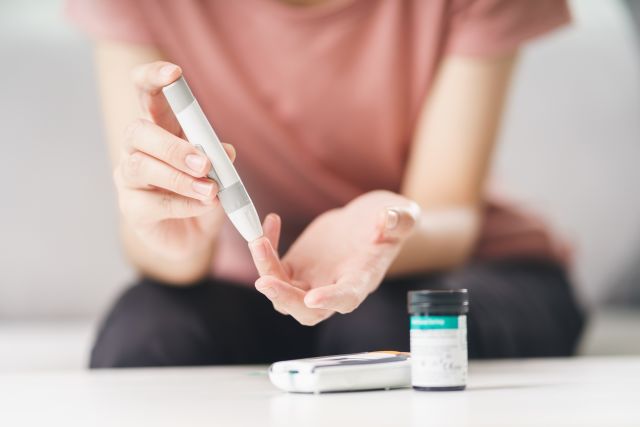Type 2 diabetes is a common health condition that affects tens of millions of people in the United States (and many, many more worldwide).
While type 2 diabetes is extremely common, it is also a different experience for every person. Different people find success with different treatments—and because type 2 diabetes is a lifelong condition, many people find that they need different medications at different points in their life.
To help understand what treatment options are available, here we will look at the three main categories of type 2 diabetes medications—oral medications, non-insulin injectables, and insulin.
Before we get started, remember that your healthcare provider will be your best source of information about any medication you are prescribed or are considering for the treatment of type 2 diabetes. Before starting any medication, it is important to discuss and understand the potential adverse effects of that medication.
It’s also important to talk to your healthcare provider about the foods you eat and how physically active you are. Diet and exercise are essential to managing type 2 diabetes—and all of the medications discussed below are intended to be used alongside diet and exercise.
Oral medications
Oral medications refer to pills and tablets. There are a variety of different oral medications that help treat type 2 diabetes in different ways:
- Biguanides. Better known by the name metformin, these medications reduce how much glucose is released by the liver and how much glucose is absorbed inside the intestines. They also improve the body’s ability to use insulin. These are often the first medication prescribed for type 2 diabetes.
- Sulfonylureas. These were the first oral medication for diabetes and have been prescribed since the 1950s. The sulfonylureas prescribed today are called second- or third generation and can be taken at lower dosages. These medicines work by stimulating the production of insulin in the pancreas.
- DPP-4 inhibitors. These medications block an enzyme called DPP-4. Blocking this enzyme helps the body produce more insulin and helps the liver release less glucose after meals.
- SGLT2 inhibitors. These medications act in the kidneys. They cause less glucose to be reabsorbed into the blood and more glucose to be excreted in urine.
- Meglitinides. These medications work in a similar way to sulfonylureas but are taken with meals instead of once or twice a day.
- Thiazolidinediones (TZDs). Also called glitazones, TZDs help make the body more sensitive to insulin and help sugar move out of the bloodstream and into muscles, fat tissue, and the liver.
- Alpha-glucosidase inhibitors. Also known as starch blockers, these medicines act in the small intestine, where they cause the body to absorb glucose from carbohydrates more slowly, giving the body more time to distribute the glucose being released from the breakdown of carbohydrates.
While some people with type 2 diabetes are only prescribed one medication, many people are prescribed more than one medication. This approach is called combination therapy. There are also numerous oral medications that combine two types of diabetes medications into one pill.
Some oral medications may be prescribed along with non-insulin injectable medications and insulin.
Non-insulin injectable medications
These medications are exactly what they sound like—medicines that are not insulin and are given as injections.
Most non-insulin injectable medications are GLP-1 receptor agonists. These medications stimulate the receptor for a hormone called a glucagon-like peptide-1, which is found in the pancreas. Stimulating this hormone receptor causes the body to release more insulin in response to glucose and also slows digestion, giving the body more time to address glucose released during digestion.
Some GLP-1 receptor antagonists are long-acting, and injections are administered once a week. Others are short- or intermediate-acting and injections are given daily. (There is also one GLP-1 receptor antagonist that is taken orally.)
There is also a non-insulin injectable medication called an amylinomimetic. This medication is taken along with mealtime insulin. It is a synthetic version of a hormone called amylin. This medication helps slow digestion, reduce how much glucose is released by the liver, and prevents blood sugar from rising too quickly and too high after meals.
Insulin
Insulin is a hormone that is made in the pancreas. The body needs adequate amounts of this hormone to move glucose out of the blood and into muscles, fat tissue, and the liver, where it can be used as energy or stored until it can be used as energy. Adding insulin into the body enables the body to regulate blood sugar levels and avoid the damage caused when blood sugar levels are too high.
Insulin therapy involves taking a lab-synthesized version of insulin. In most cases, insulin is taken as a subcutaneous (“under the skin”) injection. This can be done with a needle and syringe, an injection pen, or an insulin pump. (There is also an inhaled form of insulin, and an oral insulin medication is in development).
The choice of what method to administer insulin will depend on a number of factors, including the type of insulin a person needs to take.
There are many different types of insulin available. Different types of insulin can work at different speeds, peak at different times, and last for different durations—and work better for different people.






